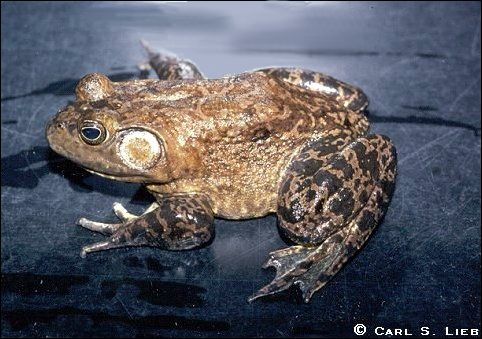
One key to success in life is being versatile. Some animals lack this trait, becoming too specialized to switch when hard times show up. A prime example is the Black-footed Ferret, who did well as long as prairie dogs thrived. When poisoning campaigns wiped out millions of their natural prey, ferret populations plunged, and the animal is one of the most endangered North American mammals.
On the other hand, some animals will eat almost anything. The Bullfrog fits that bill. Its wide distribution has allowed a pretty impressive list of food items noted. Its diet is known to have included, among other things, vegetation, leeches, salamanders, snakes, alligators, turtles, birds, rodents, toads, bats, rattlesnakes, insects, snails, and crayfish. In high-density areas, it's not at all adverse to snacking on its very own young.
The frog has been widely introduced west of its native habitat, so
there's considerable question as to whether it was native to the Chihuahuan Desert.
But native or not, it and its appetite are certainly here—helping wreak havoc
upon our native fauna. 
Contributor: Arthur H. Harris, Laboratory for Environmental Biology, Centennial Museum, University of Texas at El Paso.
Desert Diary is a joint production of the Centennial Museum and KTEP National Public Radio at the University of Texas at El Paso.

Bullfrog (Rana catesbeiana). Photograph by Carl S. Lieb.
Clakson, R. W., and J. C. deVos, Jr. 1986. The bullfrog, Rana catesbeiana Shaw, in the lower Colorado River, Arizona-California. Journal of Herpetology 20(1):4-49.